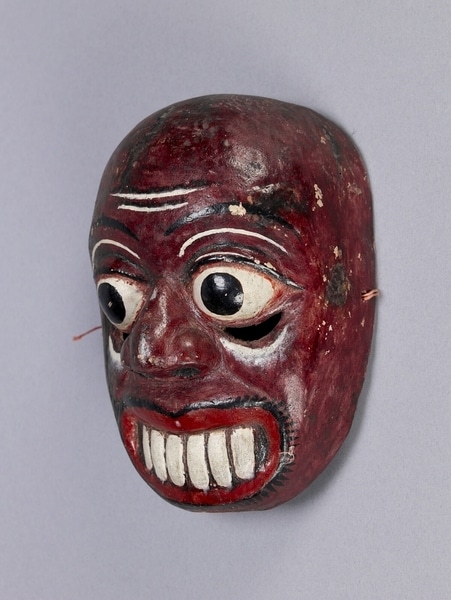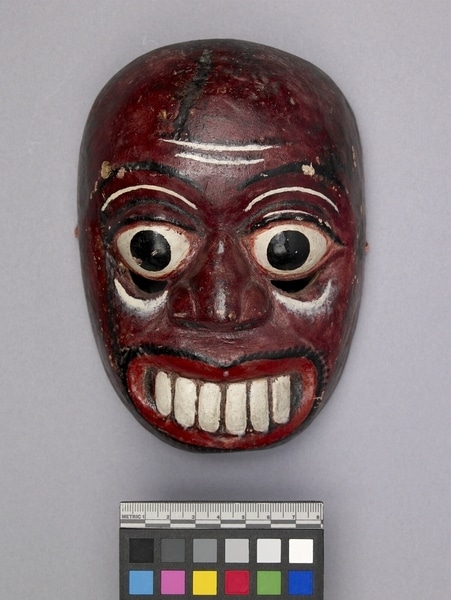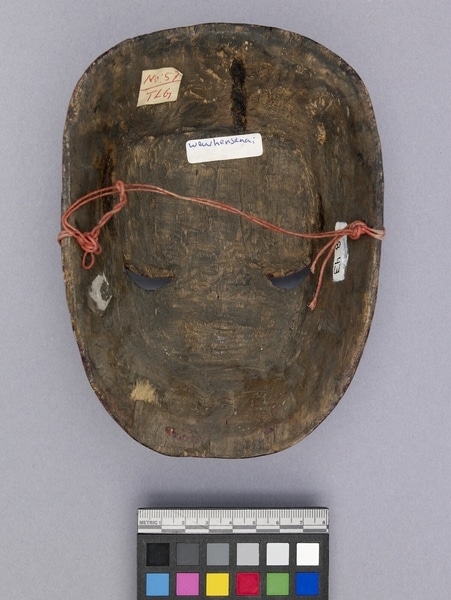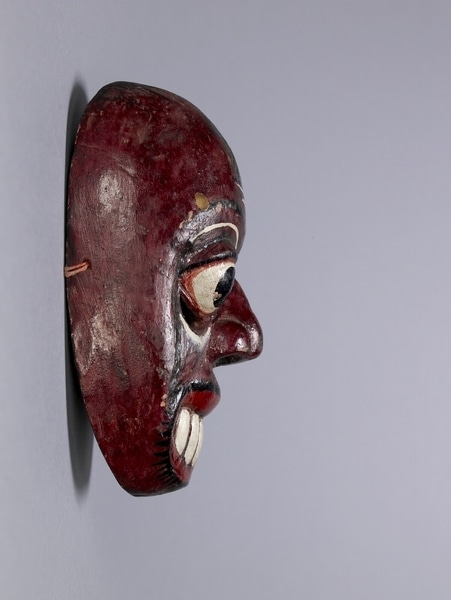Mask Item Number: Eh88 from the MOA: University of British Columbia




Description
Mask with red humanoid face that has bulging eyes with crescent-shaped holes underneath, a bulbous nose, black and white lines on the forehead and brows, and wide red lips surrounded by radiating black triangles, and long white oval teeth. An orange cord is strung through holes on either side of the mask. A label written in blue ink on reverse reads, "Wewhensanai," and another label written in red ink reads, '57/TLG'.
History Of Use
Worn during curing ritual of the Sanni Yakuma ceremony, part of the Tovil series of dramas performed by Sinhalese ritual specialists and dancers. The Sanni Yakuma is intended to combat diseases and afflictions caused by the Sanni group of demons. These consist of 18 or more apparitions of the chief demon, Maha Kola Sanni. The officiating healer honours Buddha, then appeases the demons with offerings, dancing, and chanting. This mask represents Wewhen Sanni, who depicts shivering. If used as Gamaya, in the Kolam, it is used in the last part of the drama.
Cultural Context
exorcism
Iconographic Meaning
The mask may represent two characters. The bulging eyes, large mouth, single row rectangular teeth, lines around mouth and colour correspond with Wewhen Sanni, or its physical characteristics also suggest Gamaya, a character in the Kolam, a satirical folk dance drama.
Item History
- Made in Sri Lanka before 1978
- Collected during 1978
- Owned by Jason Schoonover before June 10, 1982
- Received from Jason Schoonover (Seller) and Museum of Anthropology Shop Volunteers (Funding source) on June 10, 1982
What
Who
- Culture
- Sinhalese
- Previous Owner
- Jason Schoonover
- Received from
- Jason Schoonover (Seller) and Museum of Anthropology Shop Volunteers (Funding source)
Where
- Holding Institution
- MOA: University of British Columbia
- Made in
- Sri Lanka
When
- Creation Date
- before 1978
- Collection Date
- during 1978
- Ownership Date
- before June 10, 1982
- Acquisition Date
- on June 10, 1982
Other
- Condition
- fair
- Current Location
- Case 107
- Accession Number
- 0812/0004